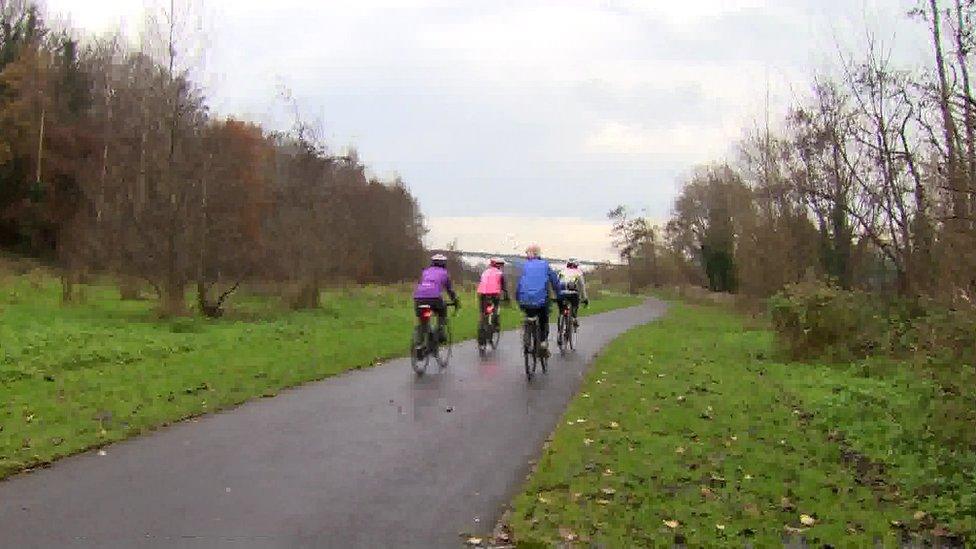Sixty years since Fermanagh's trains came to a shuddering stop
- Published
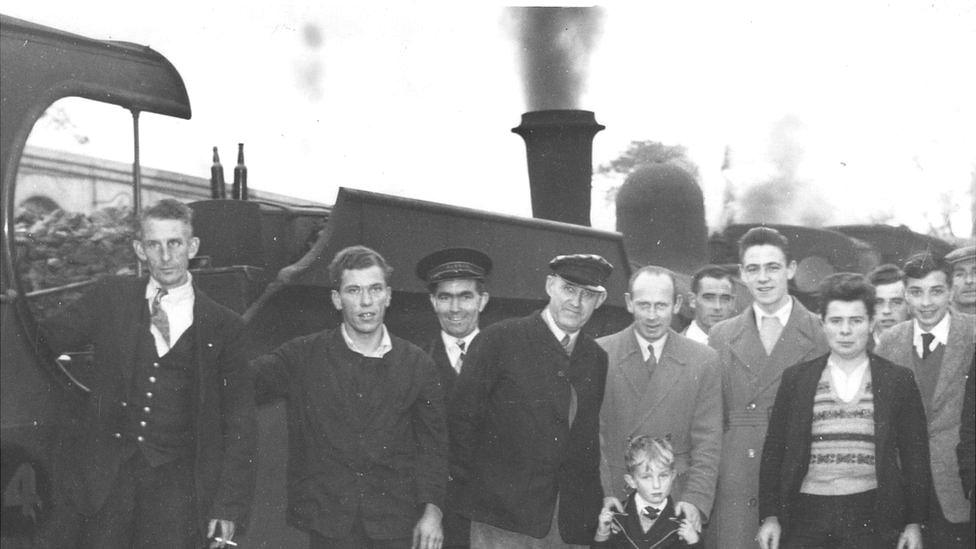
Members of staff on the last day of the railway in Fermanagh
The closure of the railway in Fermanagh had such an impact, that six decades have not dimmed the impact of it.
"No matter where you wanted to, you could get on a train here in Enniskillen and go there," said Jerry Vennard, a fitter who began his career on the western lines.
"You could go to Belfast, Bundoran, Clones, Dublin and it all came to an end."

A sign has been unveiled at the site where the line came down into Enniskillen, complete with traction engine
Jerry was one of hundreds of people working on, or depending on, the railway for employment when it shut at the end of September in 1957.
"The choices were quite stark," said Alan Devers of Headhunters Railway Museum.
It has been 60 years since trains last ran in Fermanagh
"They could either transfer to the Ulster Transport Authority, to the buses or lorries; they could go on the dole, transfer to some of the railways in the east of the province, or be pensioned off.
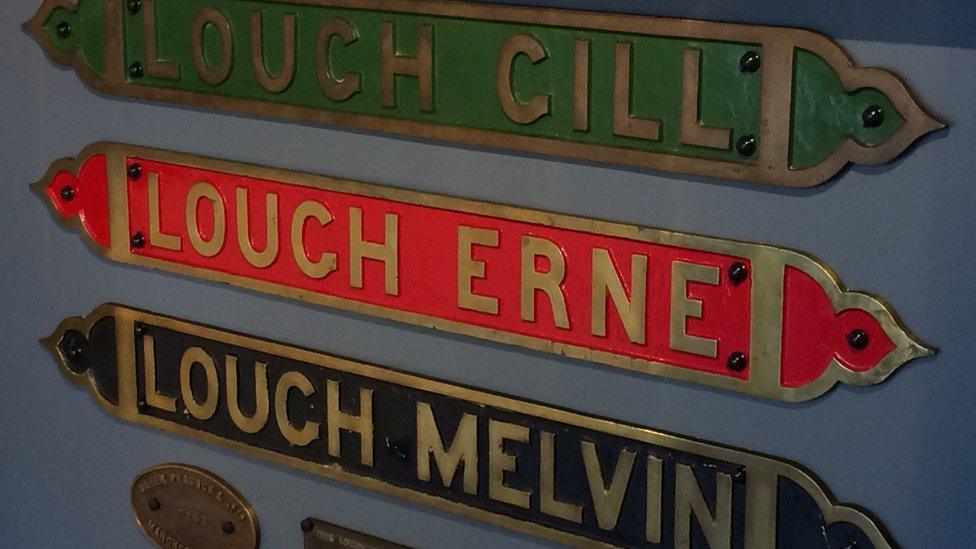
A new exhibition by the Headhunters Railway Museum is telling the story of the railway in Fermanagh
"Indeed, some of the older men around the 60 plus age group never worked again."
There were last-ditch efforts to keep the line open, with even a high-speed diesel train being introduced in July 1957. It could reach Belfast in two hours and 20 minutes.
But it was not enough. The railway network had been in financial trouble since World War Two ended and the governments on both sides were unable to agree on subsidies.
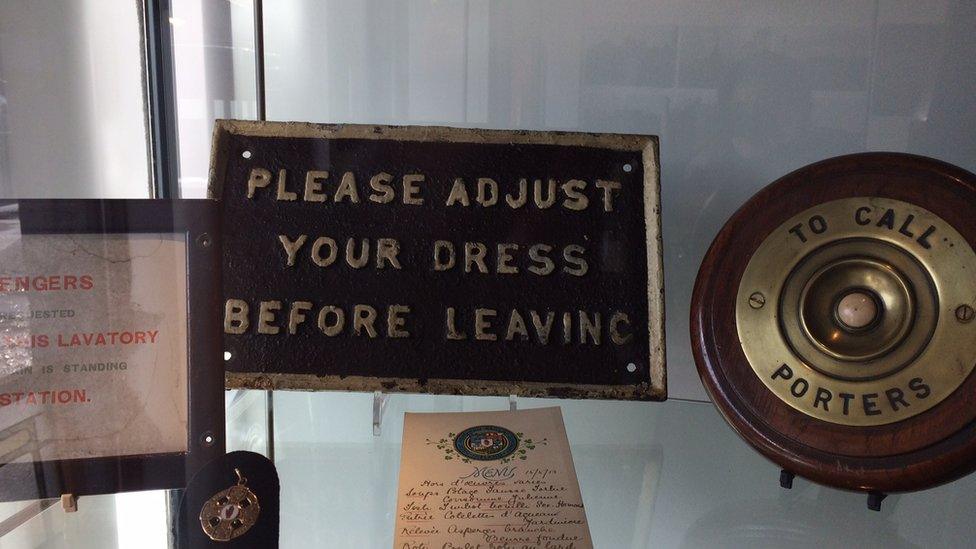
Exhibits from "Each a Glimpse and Gone Forever"
"The border really was the Achilles heel of the whole thing," said railway enthusiast Charles Friel.
"There was a huge cattle traffic heading up through Enniskillen to Derry/Londonderry and Belfast for live export.
"The Dublin government wanted to keep the line open for that.

Members of staff on the last train
"They wanted to keep the line open for the Lough Derg pilgrimage traffic to Pettigo and they wanted to keep it open to keep Bundoran going as a holiday resort and a day trip place.
"But the governments couldn't agree and the subsidies fell through.
"The railway men, like a lot of us at the time, could not believe it could really happen.
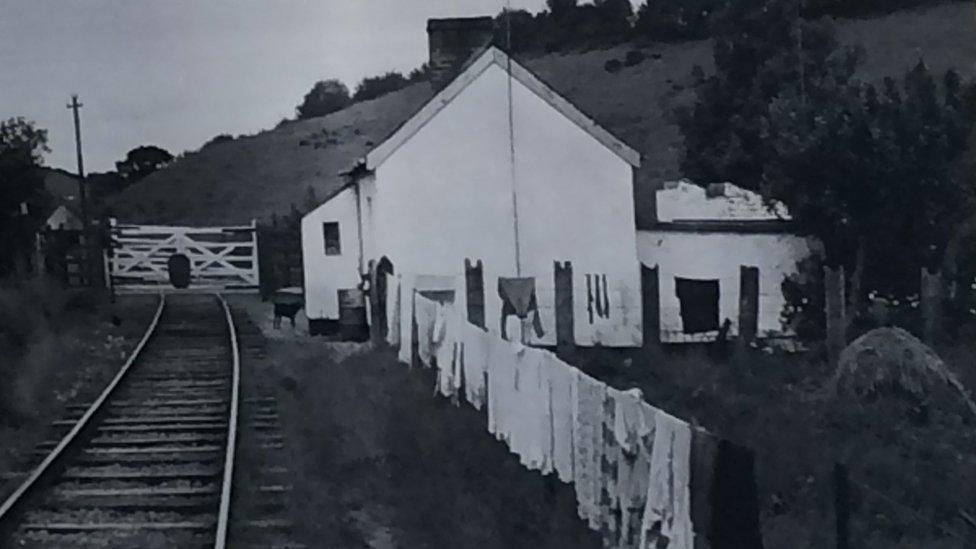
Level crossing on what is now the Derrylin Road
"We thought it was going to be here forever. But on Monday 30 September, 1957, it came to a shuddering stop."
Enthusiasts are determined to keep the happier memories alive, even though much of the railway structure has vanished from Fermanagh.
A sign has been unveiled at the site where the line came down into Enniskillen and a new exhibition by the Headhunters Railway Museum is telling the story of the railway in Fermanagh.
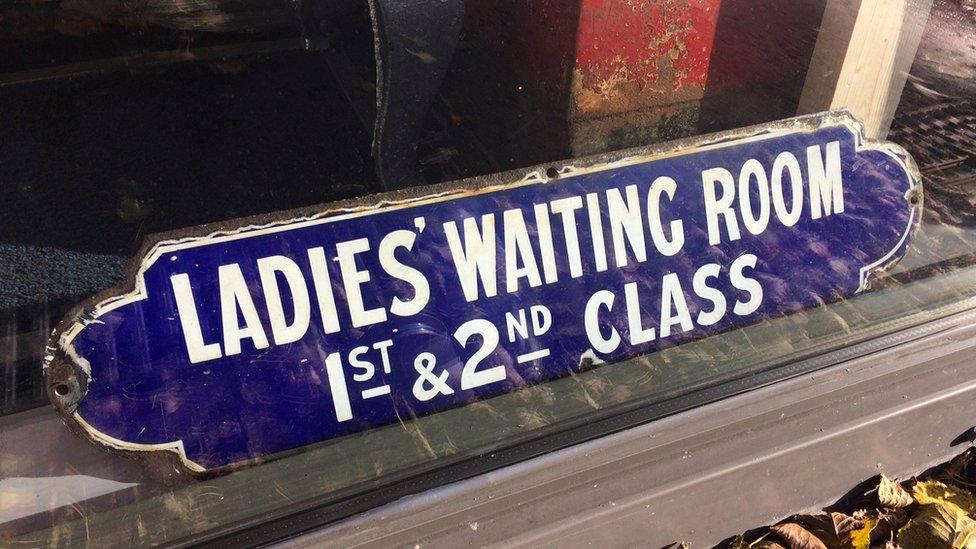
A sign from the ladies' waiting room
"In the 1950s, an enthusiast from England called JJ Smith came over to Ireland to record the railways in this part of the world before they disappeared," Alan Devers from the museum said.
'Forced to buy car'
"He made several visits, including on the day of the closure, and he went to quite isolated places to take pictures of the railway scene as it really was, not just the showpiece end of it, but the working end."
The collection includes photos of that last day - the crowds on the platform in Enniskillen and members of staff posing beside the last train, the words "Loving Memory" written in the dust on its side.

Engine nameplates on display at Fermanagh County Museum
Alan summed up the greatest impact of the closure in one phrase.
"Everybody was forced to buy their own cars."
"Each a Glimpse and Gone forever" - the story of the railways in Fermanagh, continues at Fermanagh County Museum until January 2018.
- Published1 October 2017
